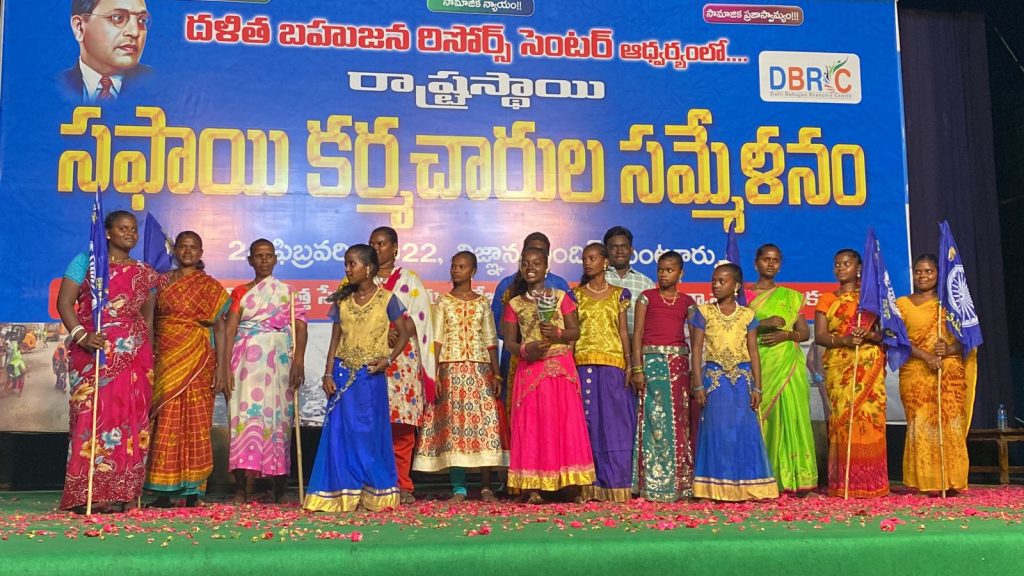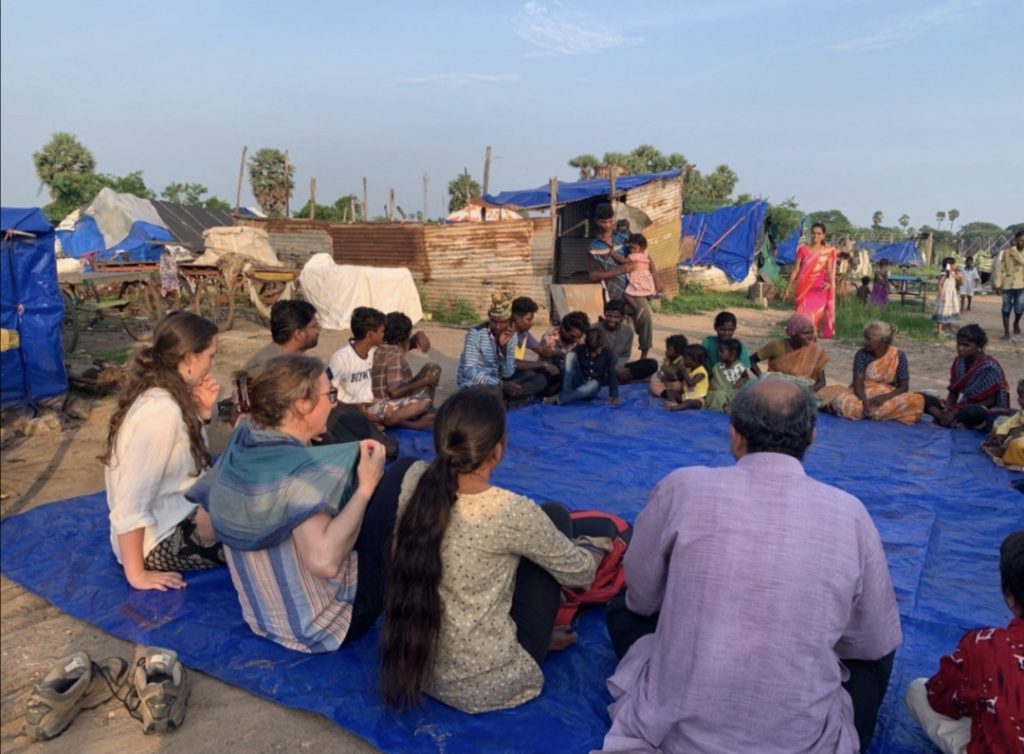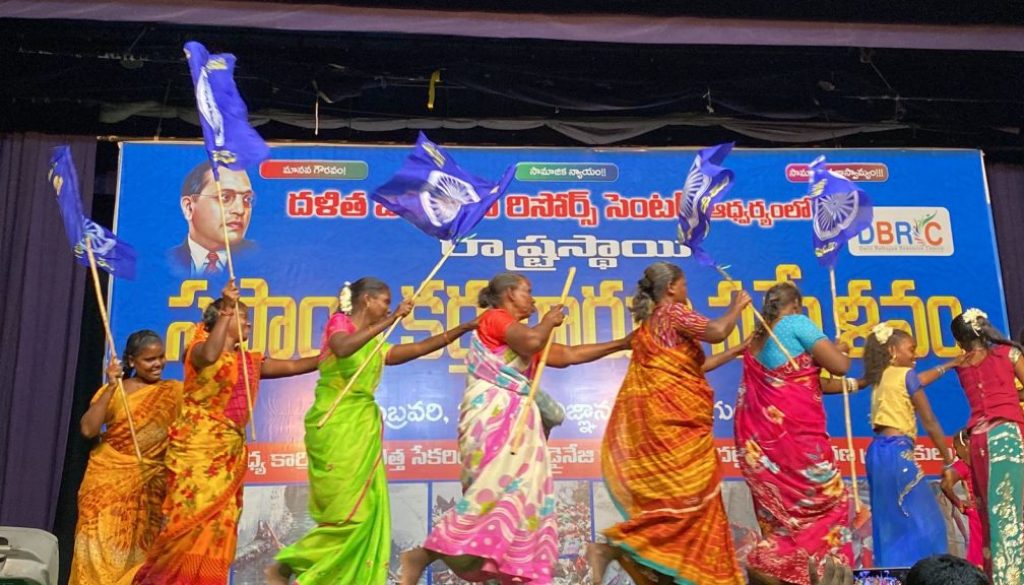Performing arts: Opening pathways to community mobilisation and action
By Hemanth Chandu
Over the centuries, performing art (PA), such as drama, songs and street theatre, has raised awareness on immediate issues that affect communities and regenerated the community’s approach towards the issues they face. But by sharing stories in ways that facilitate constructive dialogue and reflection, PA also has the inherent capacity to transcend socio-economic boundaries and thus improve the overall well-being of communities.
In this blog post, I explore the ways in which awareness campaigns are held among the waste picking communities in and around the cities of Guntur and Vijayawada in India and how such an interactive medium affects the provision of a space for the community to reflect and act upon their issues.
Awareness campaigns: Top-down approaches alienated from structural issues
Awareness campaigns are often plagued with several constraints, such as a short timeframe, limited budgets, and lack of evaluation. However, one of the primary problems with awareness campaigns is that they focus only on the evident visible impediments and overlook the structural problems and root causes.
Consider the example of an organisation creating awareness among the waste picking community about good health. A common NGO-style approach to such an awareness campaign would be to highlight the importance of staying healthy by keeping the body clean, maintaining hygiene, and eating healthy food. They distribute free hygiene kits and essential products, explaining the need for and correct usage of the kit, and then leave with the hope that they brought a change in the community.
And, if the initial results suggest that the community understood the purpose and started following the routine explained during the campaign, the organisation sees this as a positive impact of their awareness campaigns and repeats the same cycle.
In doing so, they fail to ask themselves the most primary and important question- “What could be the reasons for the community’s poor living condition?” As a result, the awareness campaign fails to detect the root causes and hence fails to identify more effective short-term and long-term solutions. This would also be reflective of how some organisations fail to factor in the social determinants of health.


Performing arts: From emotive communication to sustained community action
When PA is used to communicate sensitive issues, awareness building happens with both intellectual and emotional engagement. There is a sense of ‘empathy’ that emerges in this approach since the actor tries to re-imagine themself in the situation of the spectator. That itself makes PA a powerful means to facilitate critical thinking and community action on the issues that affect their everyday lives.
Unlike meetings, PAs use the emotive impact to sensitize people to not only the immediate issues, but also the underlying structural causes. These also lead to a ripple effect for the community development process because PAs can easily continue to be a part of the community life.
This was evident to us in a PA session with a waste picking community in the Guntur District of Andhra Pradesh, India. The community members collaborated on a skit about child marriage and performed this in the presence of waste pickers from other parts of state. The skit turned out to be effective enough to inspire women in the audience to actually resolve to educate their daughters and to delay marriage until after they turn 18.
In the same session, the discussions between community members and artists went on to be shaped into 12 beautiful songs about their everyday lives and problems. These songs described various elements: their health and wellbeing, community mobilisation, government accountability, and more.
Here is a translated extract from one of those songs:
“To Light up our depressed lives
Let’s raise our fists, you and me
and step forward with a roar
Come on, let’s light up the pursuit of our ambitions.”
When people sang this song, they realised that this is indeed reflective of their everyday life and that they need to mobilise together for a better future.
Performing arts: A community intervention
The ARISE team at The George Institute is developing a similar component involving PA as an intervention in the waste picking communities. Our team facilitated several rounds of discussions between artists and individuals from the communities in Guntur and Vijayawada. People spoke about what problems ail their everyday lives, their understanding of socio-political systems, and the way they are treated by society and governments. The team discussed how plays can be the form of PA that stimulate thinking and action. It was then decided that community members would be trained to perform these plays throughout the settlements across the state.
Such intervention programmes could become a sustainable action that continues to sensitise and mobilise the community. It would require thorough routine monitoring and evaluation as well as transparent communication with the artists and community members. The findings of such an intervention might help us better understand its acceptability, community participation, and the overall experience of the community.
Unlike meetings and top-down awareness building campaigns, PAs like dramas, skits, and songs can truly connect with people’s everyday lives and vulnerabilities. It is the inherent ability to involve community members in a more inclusive manner that allows PAs to promise bonding, consciousness-building, and active participation for solution. While it is true that the desired change relies on continued actions and community involvement, PA can go a long way in channelling a route to emancipate the community from the shackles of oppression.
Image credit: Dalit Bahujan Resource Centre
